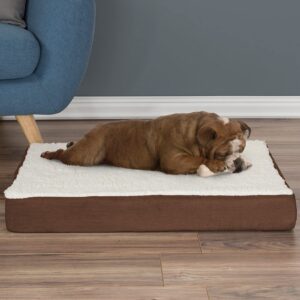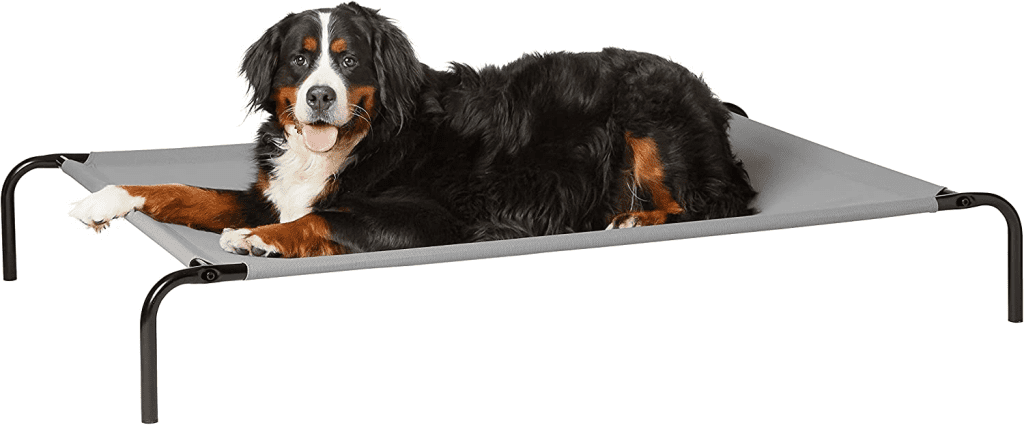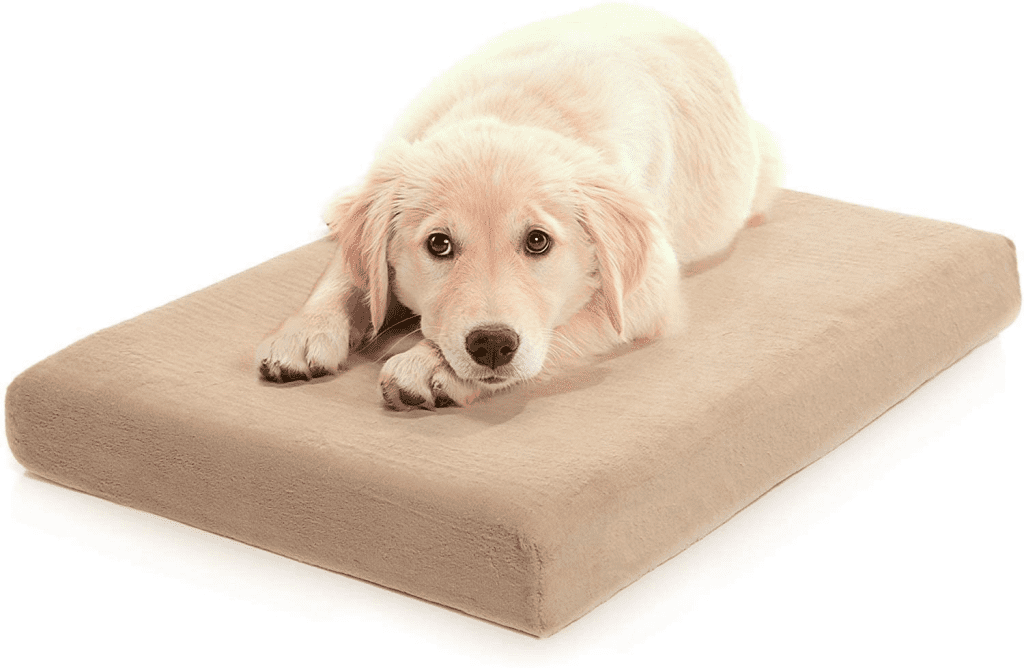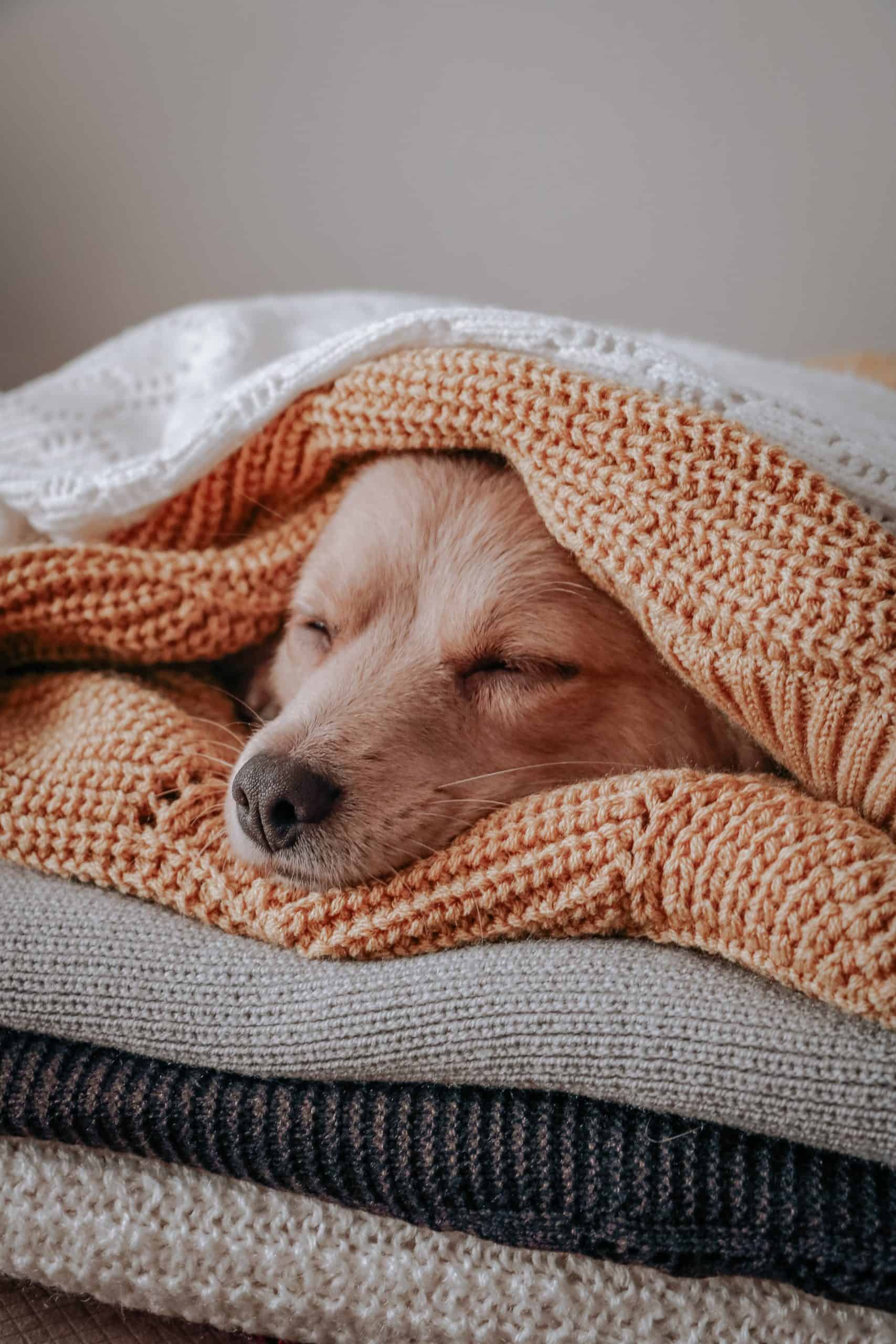Separation anxiety is a common problem that many dog owners face. Dogs are social animals, and when they are left alone, they can experience fear and anxiety. However, there are ways to make this experience less stressful for your furry friend. One of the most effective ways is by providing them with a comfortable and cozy bed. In this blog, we will explore how dog beds help with separation anxiety and provide some tips on how to choose the best one for your pup.
A great way to help combat separation anxiety issues in dogs is by providing them with a bed. Not only will this make them more comfortable and secure when you’re not home, but it can also help improve their overall health!
Treatment for separation anxiety may involve a combination of behavior modification techniques, medication, and environmental changes, such as providing a comfortable and secure dog bed.
What is Separation Anxiety in Dogs?
Separation anxiety is a behavioral issue that generally affects dogs that have been separated from their owners for extended periods. It’s important to note that separation anxiety should not be confused with boredom or lack of exercise; rather, it is a condition where the dog experiences an extreme level of stress when its owner leaves the house.
This stress leads to anxious behaviors such as barking, whining, shaking, pacing, chewing furniture or other items in the home, or even attempting to escape from the home or yard. In some cases, the dog may even become aggressive towards themselves or others around them.

What Are The Causes Of Separation Anxiety?
Lack of social interaction: One of the most common causes of separation anxiety is a lack of social interaction. Dogs that are not properly socialized may become anxious when they are away from their owner because they are not used to being away from them. This can be especially true for puppies that have not had much exposure to other people or animals. An example of this is if you take a puppy from his litter and immediately put him in a home without any other animals or people.
Unexpected changes: Dogs that experience sudden changes in their environment can also become anxious. These changes could be anything from moving to a new house to having visitors to being left alone for extended periods without their owner.
Fear of abandonment: Another common cause of separation anxiety is a fear of abandonment. This may be due to a traumatic event such as being abandoned by an owner or being rehomed. It can also be due to separation anxiety that was never resolved, such as when a dog was constantly left alone as a puppy. Example: A dog that was never properly socialized to being alone may develop severe separation anxiety in adulthood.
Lack of exercise: A lack of exercise can also be a contributing factor to separation anxiety. Dogs that do not get enough exercise are often more prone to anxiety and may become restless and destructive when left alone. This is because they have excess energy that needs to be burned off.
Separation-related behaviors: Certain behaviors may be indicative of separation anxiety. These can include barking, howling, whining, pacing, panting, drooling, and chewing.
If your dog is exhibiting any of these behaviors, it may be due to separation anxiety.
Anxiety triggers: Certain things may trigger separation anxiety in dogs. These can include changes in routine, such as a new baby or pet in the home, or a move to a new house. Other triggers can include loud noises, such as thunderstorms or fireworks, or being left alone for long periods
Fear of loud noises: Some dogs may develop a fear of loud noises such as thunderstorms or fireworks, which can trigger separation anxiety. This type of fear can often be managed with desensitization training, which involves gradually exposing the dog to louder and louder noises until they no longer react to fear
Separation anxiety is a common issue among pet owners, particularly those with dogs. Dogs are social animals and thrive on companionship, so, naturally, they can become distressed when left alone for extended periods. Dogs may express their distress through destructive behaviors such as chewing, barking, or even urinating in the house. Fortunately, there are some ways to help prevent and manage separation anxiety in dogs, one of which is using a specialized dog bed.

How Dog Beds Help With Separation Anxiety
A calming bed for dogs provide a comfortable and secure sleeping environment. If they feel safe in their bed, they are more likely to remain calm when left alone. When a dog feels anxious or stressed, the comfort of the bed can help them relax until the feeling passes. Also, it is important to use a bed that is large enough for your pet so that they have plenty of room to move around and spread out – this will make them feel even more secure and at ease.
Additionally, a bed like this will provide better physical support for your dog. A good dog bed should have plenty of cushioning and padding to prevent the formation of pressure sores or arthritis-related aches and pains. This will help reduce any pain that might be triggering anxiety in your pet.
Finally, having a designated spot for your dog to sleep can be beneficial as it helps create positive associations with resting times. This means that instead of being anxious about being alone, your pup will be looking forward to snuggling in their special spot.
Certain breeds may be more prone to separation anxiety, such as the Australian Shepherd, Bichon Frise, Cavalier King Charles Spaniel, German Shepherd, and Labrador Retriever.
Different Type Of Dog Beds And Their Benefits
Orthopedic Dog Beds: Orthopedic dog beds are designed to provide support for your pup’s bones and joints. If your pet has arthritis or joint pain, an orthopedic bed will provide extra cushioning that is tailored to their unique needs. Orthopedic beds come in a variety of shapes and sizes so you can find one that fits your pup perfectly. Not only do these beds offer extra comfort for your pup but they also give them a sense of security which can help reduce anxiety when you’re not around.
Heated Dog Beds: Heated dog beds are great for keeping your pup warm during cold winter months. These beds use electricity to heat a pad inside the bed so your pooch can stay nice and toasty even when temperatures drop outside. The warmth from these beds helps relax muscles which can alleviate some of the symptoms associated with separation anxiety. Plus, many dogs just love cuddling up in a heated bed!
Memory Foam Dog Beds: Memory foam dog beds offer superior comfort and support compared to traditional dog beds. They conform to the shape of your pup’s body while providing just enough cushioning that they won’t sink into it too much. This is especially helpful if you have an older pet who may be suffering from joint pain or stiffness due to age-related issues.
Memory foam also helps keep pets cool in hot weather since it doesn’t trap body heat as other materials do. Additionally, memory foam provides excellent insulation which helps keep pets warm in colder climates as well as helps them feel secure when alone at home which reduces symptoms associated with separation anxiety.
How To Overcome Separation Anxiety In Dogs
Understand What Separation Anxiety Is
The first step to overcoming separation anxiety in dogs is to understand what it is and what causes it. Separation anxiety is a condition that occurs when a dog becomes anxious or stressed when separated from their owner. It is thought to be caused by a combination of genetics and environment and can be triggered by things like changes in routine or being left alone.
Create A Safe Space For Your Dog
One way to help your dog overcome separation anxiety is to create a safe space for them to stay in while you are away. This could be a crate or exercise pen that is large enough for your dog to move around in and should be filled with their favorite toys and bedding. It is important to make sure that the space is not too small, as this could make your dog feel claustrophobic and increase their anxiety.
Start With Short Absences
Once you have created a safe space for your dog, you can start to slowly increase the amount of time you are away from them. Start with absences that are only a few minutes long, and gradually increase the length of time as your dog gets more comfortable. It is important to not make any sudden changes, as this could trigger your dog’s anxiety.
Give Your Dog Plenty Of Exercises
Exercise is another important part of helping your dog overcome separation anxiety. Well-exercised dogs are typically less anxious and stressed than those who do not get enough exercise. Make sure to give your dog plenty of opportunities to run and play both before and after you leave them alone, as this will help tire them out and reduce their anxiety.
Reward Good Behavior
Whenever your dog does something that indicates they are getting more comfortable with being alone, it is important to reward them with treats or praise. This will help reinforce the positive behavior and let
your dog know that they are doing well. Over time, this will help your dog overcome their separation anxiety and become more comfortable being alone
Training And Desensitization
If your dog’s separation anxiety is severe, it may be a good idea to consult a professional trainer or behaviorist who can work with you and your dog on desensitization techniques. This involves gradually introducing the dog to situations in which they will be left alone and teaching them coping skills. It should also involve practicing leaving exercises as part of their normal routine. A secure and comfortable sleeping environment is essential when undertaking these exercises, as it will help your dog feel safe and relaxed while being left alone.
Consistency Is The Key
The most important element of successfully treating separation anxiety in dogs is consistency. This means that your dog should have the same routine and sleeping environment every day, which can be achieved with a comfortable and secure dog bed. Dogs are creatures of habit and will benefit from having a consistent space to sleep and relax.
Additionally, ensuring your dog has plenty of mental stimulation in the form of interactive toys and treats as well as regular exercise can also help to alleviate their anxiety.
Create A Positive Association With The Dog Bed
You can create a positive association with your dog’s bed by placing it in an area where they feel safe and giving them treats when they get into it. Doing this regularly will reinforce your dog’s positive behavior and help to reduce their anxiety around being alone.
Using a comfortable dog bed with washable covers and plenty of cushioning will help provide your dog with the restful sleep they need, which in turn can also aid in reducing their anxiousness.

What calms dogs with separation anxiety?
Along with providing a comfortable sleeping environment, there are other tips and tricks you can use to ease separation anxiety in dogs.
• Exercise: Make sure your dog gets plenty of exercise before leaving them alone. This will help tire them out and reduce their energy levels when they are left alone.
• Create A Routine: Setting up a consistent routine for feeding, walks, and playtime can help your dog understand what to expect while you’re away.
• Comfort Items: Providing a favorite toy or blanket that smells like home can be comforting for your dog when separated from you.
There are many different books that have been written on separation anxiety in dogs available on Amazon. Some of the titles include “Fear and Anxiety in Dogs“, “Separation Anxiety in Dogs: Next Generation Treatment Protocols and Practices“, and “Separation Anxiety in Dogs: Discover How to Help Your Dog Overcome Separation Anxiety“. These books offer a variety of advice and tips on how to deal with a dog that suffers from separation anxiety, and how to help them overcome it.
Final thoughts: How Dog Beds Help With Separation Anxiety
In conclusion, separation anxiety in dogs can be a challenging issue to tackle, but by investing in a comfortable and secure dog bed, you can greatly alleviate your furry friend’s stress. With so many different types of dog beds available on the market, it’s essential to choose one that meets your dog’s specific needs.
We hope this blog has provided you with valuable insights into the ways dog beds can help with separation anxiety, and that you feel inspired to take action.
If you haven’t already, we encourage you to go out and invest in a high-quality dog bed for your pet. With a little patience, love, and the proper environment, you can help your dog overcome their separation anxiety and thrive.
Recent Posts
As a dog owner, you want to ensure that you take proper care of your furry companion. A common question that many pet owners have is, "Can I walk my dog 30 minutes after eating?" Understanding the...
Have you ever considered getting an elevated dog bed for your furry friend, but wondered if it's worth the investment? If so, you're not alone. As dog owners, we all want to provide the best care for...

